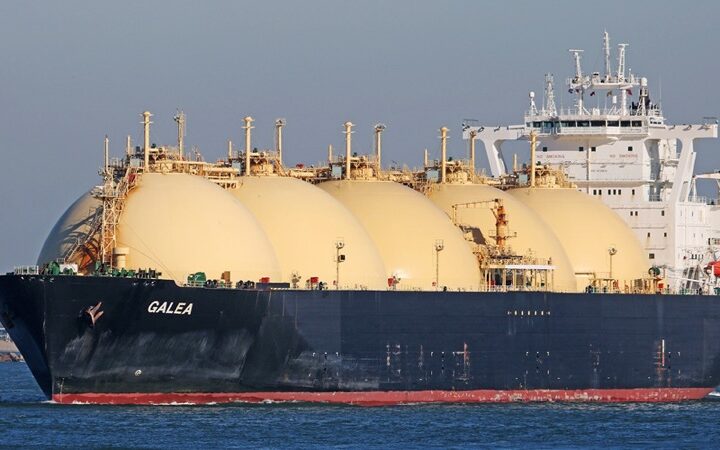.
BOOK REVIEW
Adair Turner: “Between Debt and the Devil”, (Princeton University Press, New Jersey) 2016.
By Dr. Jim Leontiades
Cyprus International Institute of Management
 A new book by Professor Adair Turner, former chairman of Britain’s Financial Services Authority during the recent recession, takes a fresh look at the role of banks, credit and much else concerning the recent financial crisis. Professor Turner suggests at the outset that it is a mistake to hold banks responsible for the crisis. Moreover, banks are essential to the economy.
A new book by Professor Adair Turner, former chairman of Britain’s Financial Services Authority during the recent recession, takes a fresh look at the role of banks, credit and much else concerning the recent financial crisis. Professor Turner suggests at the outset that it is a mistake to hold banks responsible for the crisis. Moreover, banks are essential to the economy.
But banks contributed to the 2008 financial crisis through their role as credit providers. The central theme is that the crisis was brought on by too much credit and the wrong type of credit.
How did this come about? Why was it not foreseen? What can be done in the future? These are the more interesting parts of his book. The author suggests that anyone interested as to how and why the crisis came about should focus on government finance ministries, central banks and the economic theories that “underpinned their policies”.
The Role of Theory
The two key theories which shaped the intellectual climate on financial matters prior to the crisis were the efficient markets theory and that of rational expectations. Both are flawed. Real world evidence on human irrationality and the existence of major market imperfections contradicts both of these theories. They not only encouraged the development of faulty risk models, they also played a major role in the deregulation of banks and financial deepening (an increase in financial activity relative to GDP, and more liquidity). But financial deepening can make matters worse and more market liberalisation is not necessarily good. “Left to itself, a free financial system will produce too much private credit”.
Prior to the 2008 crisis, national central banks provided only loose control over a liberalised banking system. The main efforts of central banks were devoted to controlling inflation. Excessive credit creation was not a major concern. This was based on the belief that low inflation meant that increases in credit would go to business and be beneficial. According to the prevailing view, found in economic textbooks, banks collect savings from private households and channel these to finance businesses and entrepreneurs. The recent financial crisis proved that wrong.
The reality is that only a small portion of new credit (14%) goes to business. The great majority of credit in advanced economies goes to finance the exchange of existing assets, particularly real estate. Lending for real estate in 1928 accounted for about 30% of bank lending. This has increased steadily, reaching nearly 60% of total bank lending in 2007.
There is no “perfect market” that ensures the “right “supply of credit will be directed toward real estate lending. The supply of land (whose value is the biggest part the increase in real estate value) is limited. Expectations (which are not necessarily rational) may lead to an increase in demand for a particular asset such as real estate and an increase in its price, resulting in a demand for more credit, higher prices and a cycle of such increases.
There is just so much credit that an economy can support. When the limit is reached the bubble bursts. Real estate prices fall and the cycle is reversed. House owners who are highly leveraged reduce their spending, depressing overall demand. A strong correlation has been found between areas where households were most highly leveraged and a drop in consumer expenditure which brought with it a fall in business investment and a rise in unemployment. Besides real estate, Professor Turner identifies two other “drivers” of excessive credit creation.
Income Inequality and Globalisation
Rising Income Inequality also contributes to excessive credit. People with higher incomes tend to save more. Their savings are channeled into banks where they are made available to poorer people. This money is used to help finance mortgages on houses whose value often rises, encouraging more buying, etc. Rising inequality helps to fuel this cycle.
Globalisation has added a further boost to the credit cycle. Flows of capital between countries in response to trade deficits and surpluses have increased the supply of credit. The trade surpluses of countries such as Germany and China are in effect loans, supporting credit expansion in deficit countries such as the UK and USA.
A Credit Cycle on Steroids
Over the past 40 years, a host of financial innovations (derivatives, credit default swaps, interest rate swaps, securitisation, shadow banking, risk management tools, synthetic CDOs) which were thought to make the market more “perfect”, have been counterproductive. A “much bigger and more innovative financial system led to the crisis of 2007-2008”, a credit cycle “on steroids”.
For example, the securitisation of mortgages was initially thought to make for a better distribution of risks. It would make credit less dependent on bank capital adequacy and therefore less volatile. In practice, securitisation meant that banks were able to sell mortgages to a series of “upstream” buyers. There was therefore little incentive on the part of banks who agreed the initial contract to ensure that that the mortgage would be repaid. The incentive was to maximise quantity.
The Eurozone
The common currency facilitated the sort of capital flows (from trade surplus to trade deficit countries) as described above. Deficit Eurozone countries (Greece, Portugal, Spain, Italy) were able to finance their imports by borrowing excessively from Northern European countries with trade surpluses. Eventually, the borrowing reaches a limit with the adverse consequences which are now familiar. Eurozone policies of fiscal austerity simply aggravate the problem. Turner describes the Eurozone as a “free market vision gone awry”. If it is not able to change itself into a political union, a break up is “likely to be inevitable”.
Suggested Actions
Professor Turner considers several possible solutions to his central thesis: “the need to constrain private credit growth”. Increased financial regulation, higher capital requirements for banks, taxes on income inequality and other measures are considered.
He concludes that such measures may help but they are not sufficient. There is no panacea. The problem is made more difficult by the fact that credit creation is closely related to growth. It creates much of the purchasing power behind economic expansions. The challenge is how to bring about a balance favouring growth but avoiding too much credit.
Helicopter money (or fiat money produced by the government) is considered a promising possibility. This can create the purchasing power and growth which has typically depended on credit creation. This power has been abused in the past (and present). However, there have also been situations in which it has been successful. He recognises that most bankers and politicians not only oppose it as an economic policy but also have moral issues, considering the practice as almost sinful, close to the “devil”. But history shows that excessive debt creation also has its dangers. Professor Turner argues strongly for keeping open the option of fiat money.
This brief summary cannot do the book justice. I suggest that it is required reading for anyone interested in the subject.







